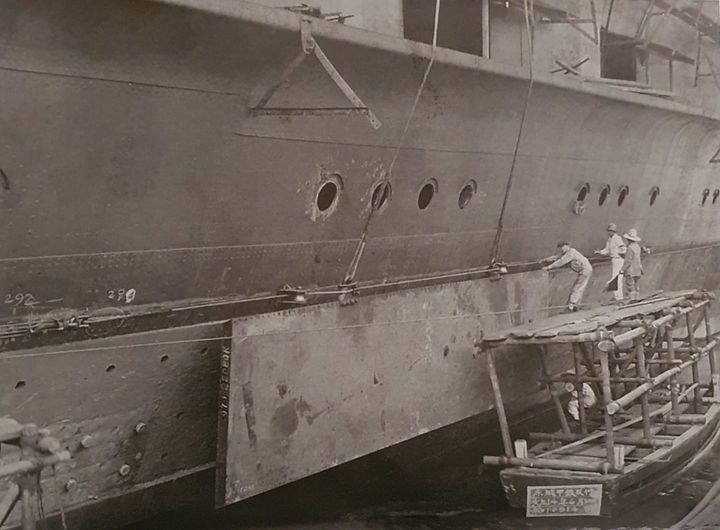
Posted by Gottfried Alexan der van der Horst,
The re-designation of the 41.000-tons BC into the 26.900-tons (actual 29.500-tons) CV Akagi was very difficult as was the conversion of the incomplete hull. This photo, taken on 30 June 1925, shows the fitting of the belt armour. As BC the belt was to be of inclined 254-mm VC armour but as CV thickness was reduced to 127-mm as protection against 20.3-cm projectiles fired from 10.000-tons CA's of the USN (and also the calibre of the guns mounted on the 33.000-tons CV's Saratoga and Lexington of the USN and that of her own guns). Because a considerable amount of the armour plates was already produced, the Steel Division of Kure N.Y. had to re-roll these plates to exactly half of their former thickness. It was the first time that such work was made in Japan. Note the position of the armour bolts and the backing wood left of the plate just fixing. The openings above and at right are casemates of the 20.3-cm side guns.












































































